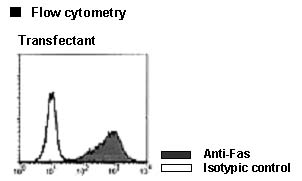Anti-Fas (CD95) (Human) mAb-PE
Product Code:
MBL-MD-10-5
MBL-MD-10-5
Host Type:
Mouse
Mouse
Antibody Isotype:
IgG1
IgG1
Antibody Clonality:
Monoclonal
Monoclonal
Antibody Clone:
UB2
UB2
Regulatory Status:
RUO
RUO
Target Species:
Human
Human
Applications:
- Flow Cytometry
- Immunohistochemistry (IHC)
Shipping:
4°C
4°C
Storage:
4°C
4°C
No additional charges, what you see is what you pay! *
| Code | Size | Price |
|---|
| MBL-MD-10-5 | 50 Tests | £345.00 |
Quantity:
Prices exclude any Taxes / VAT




